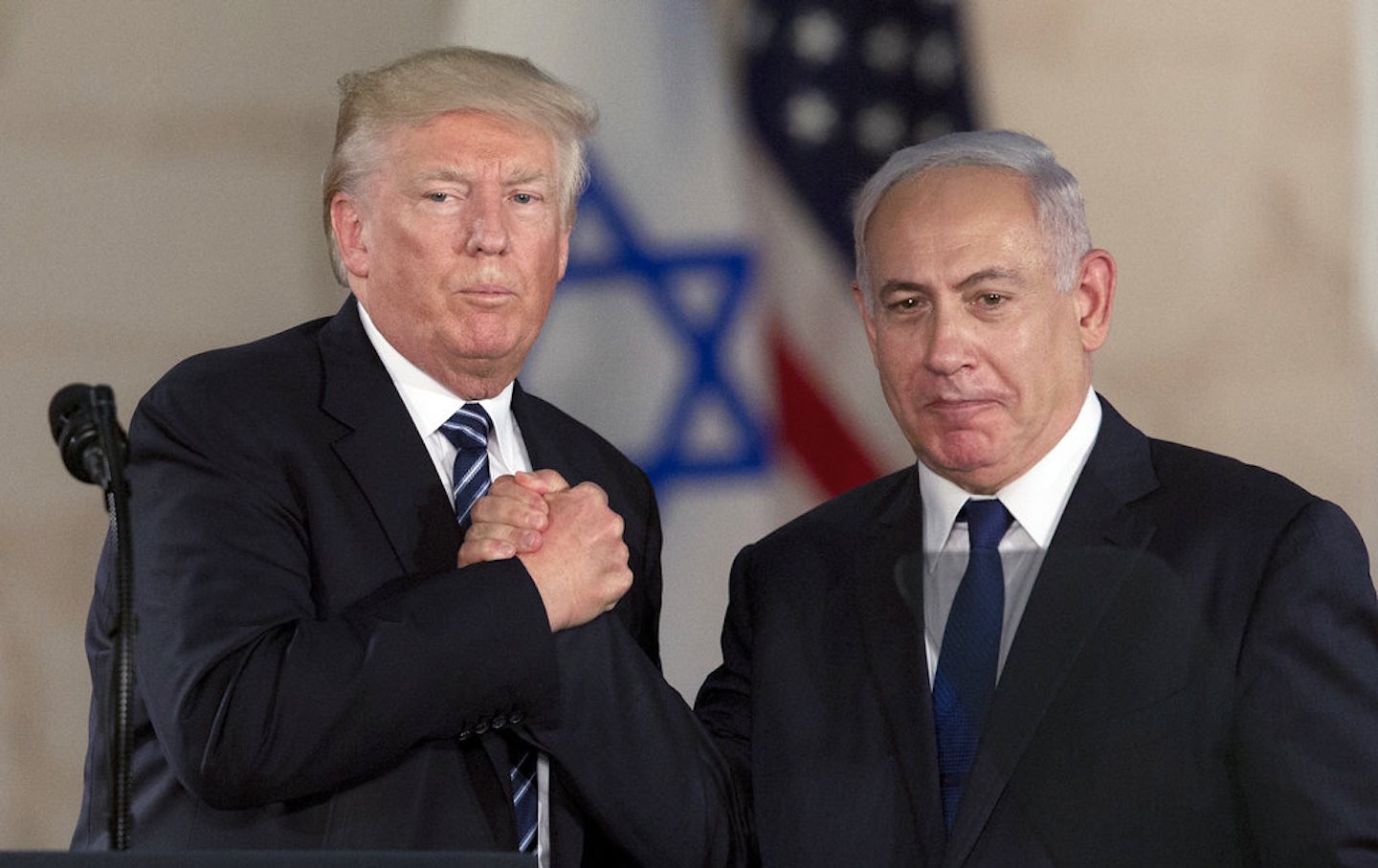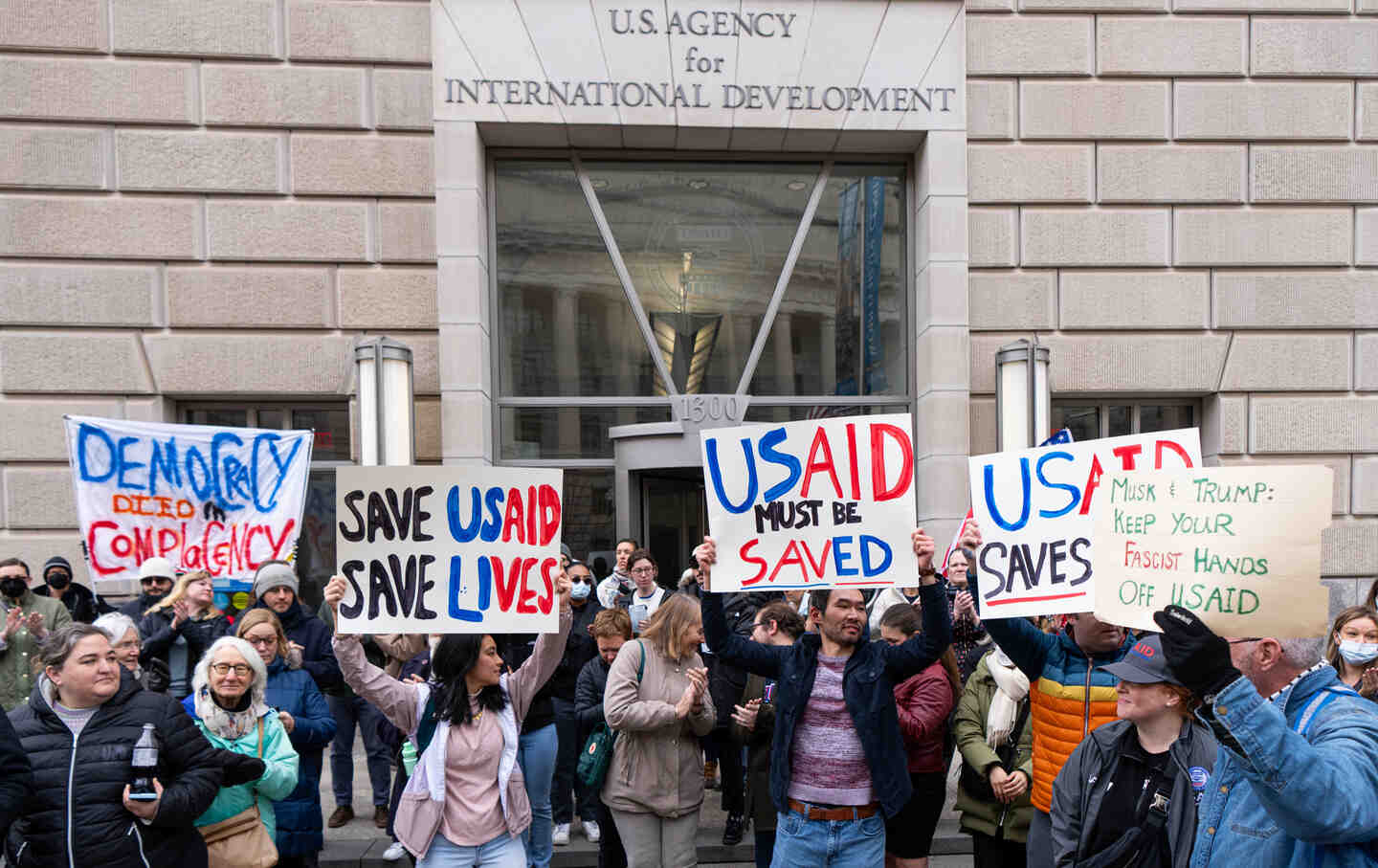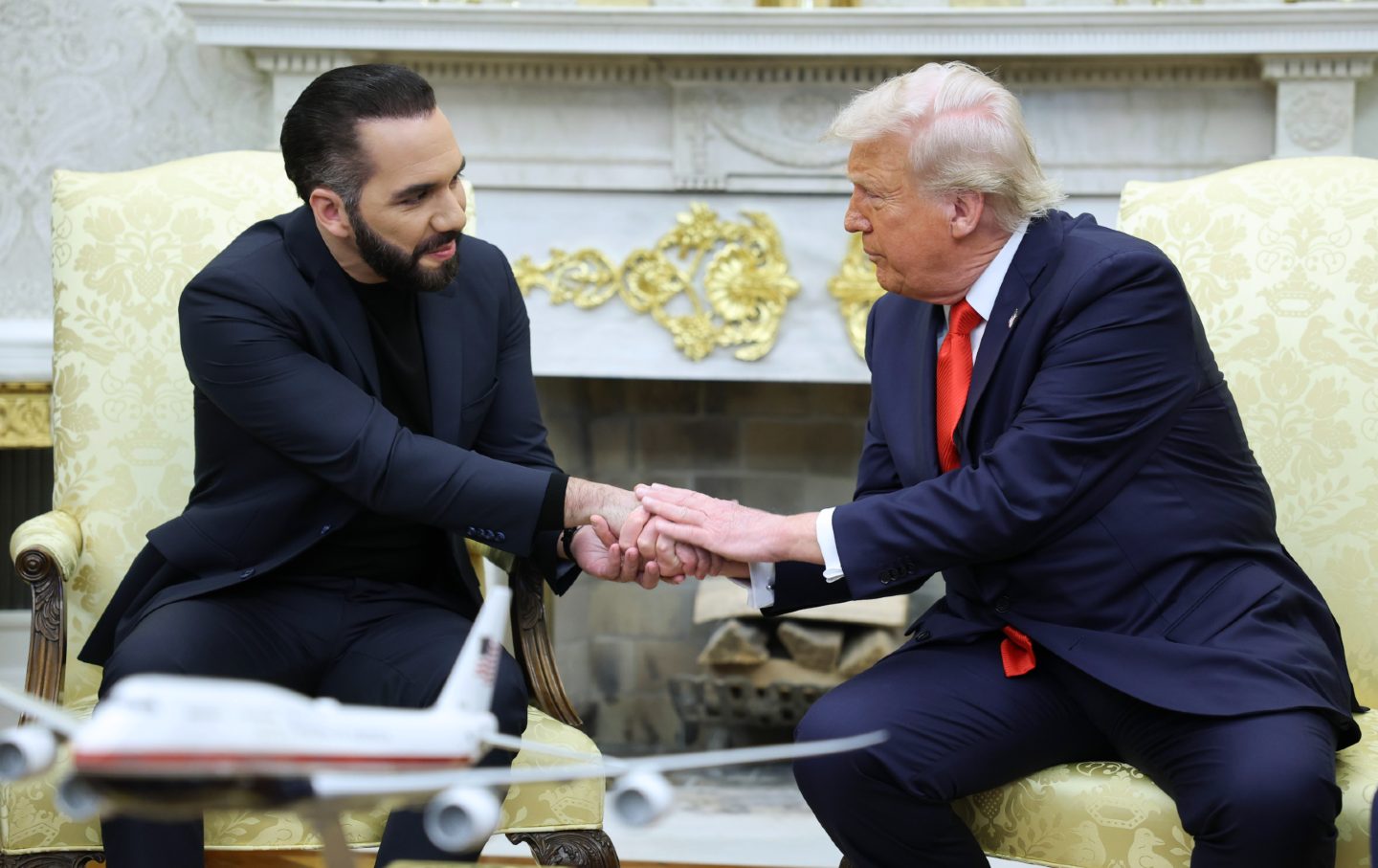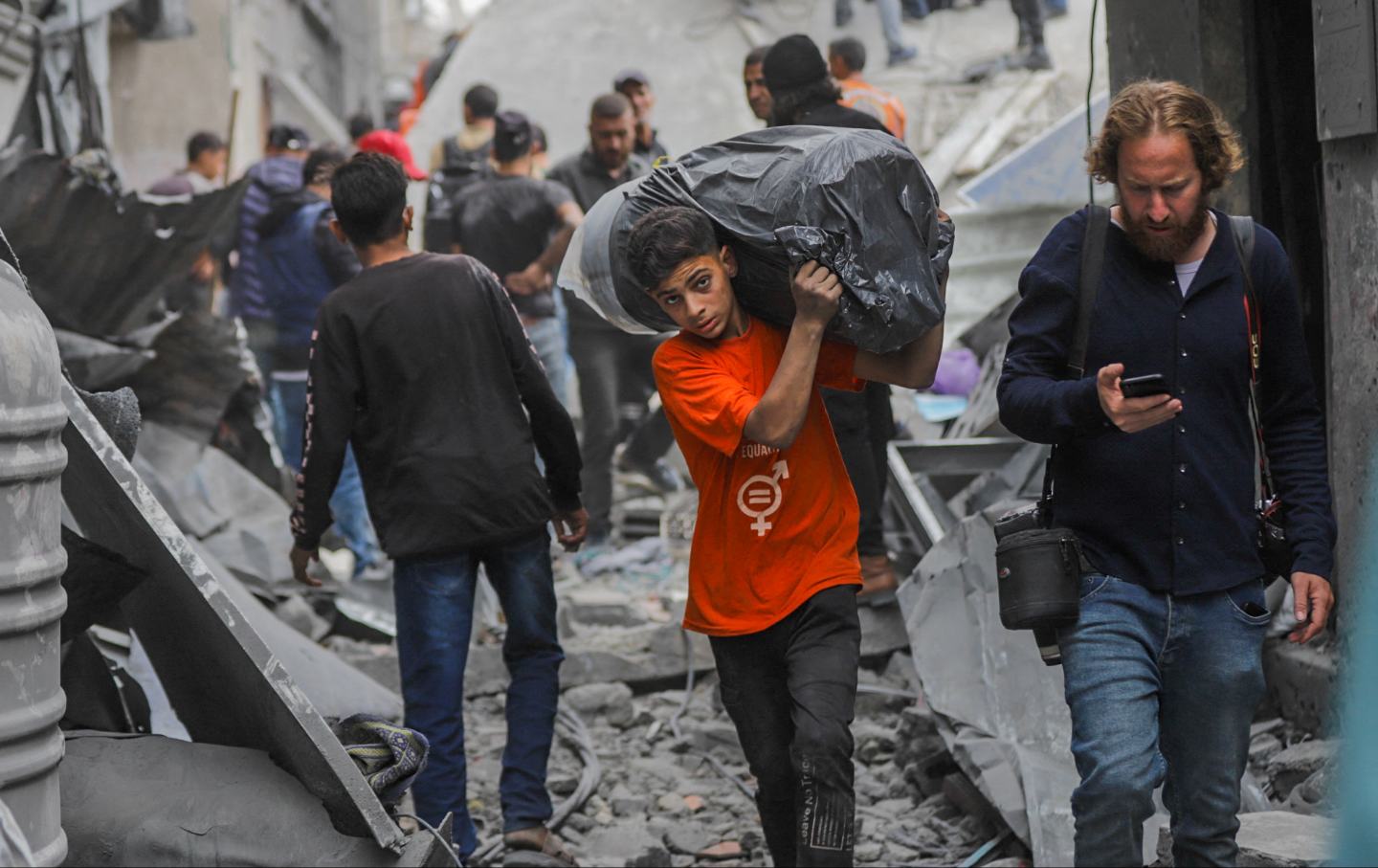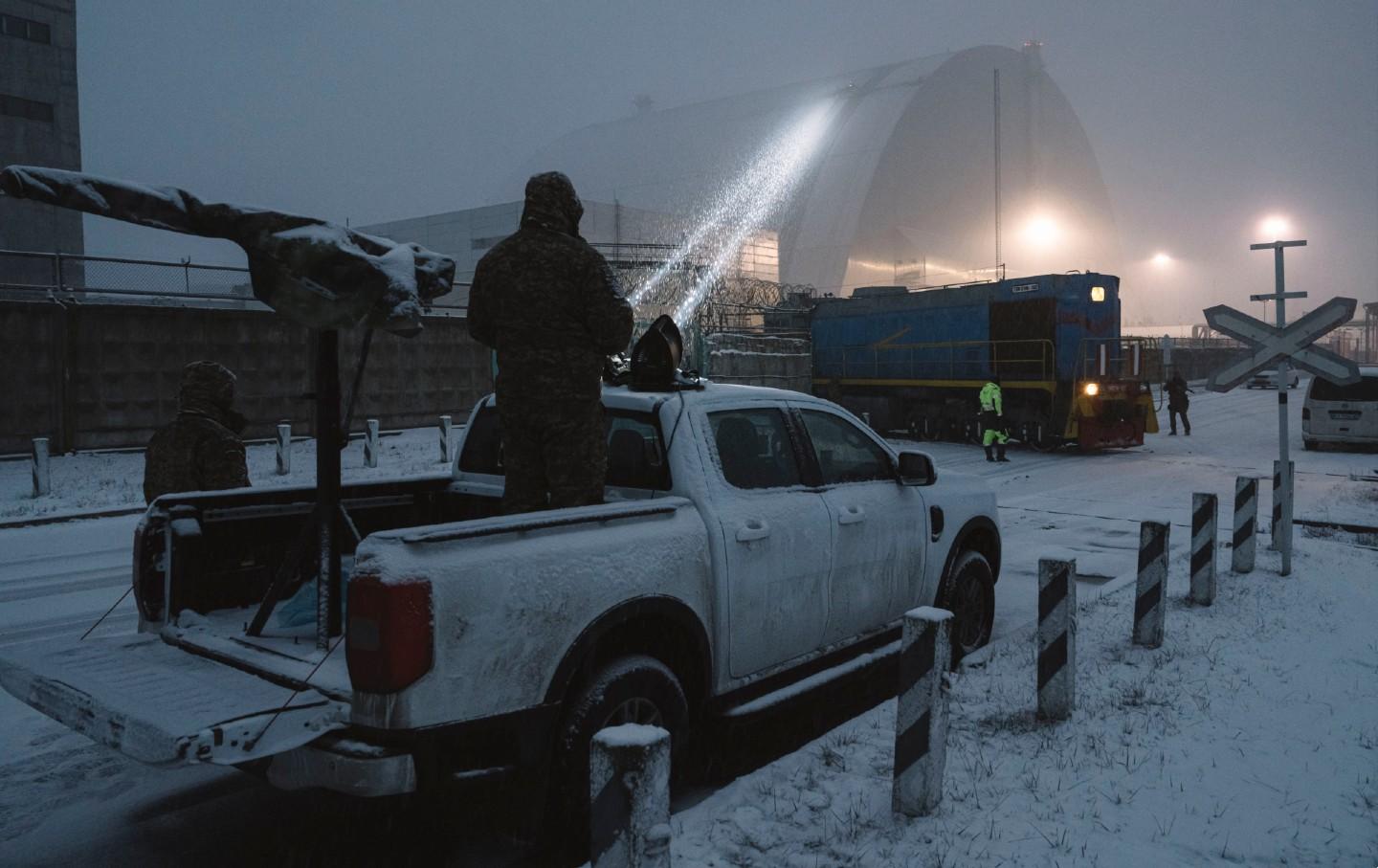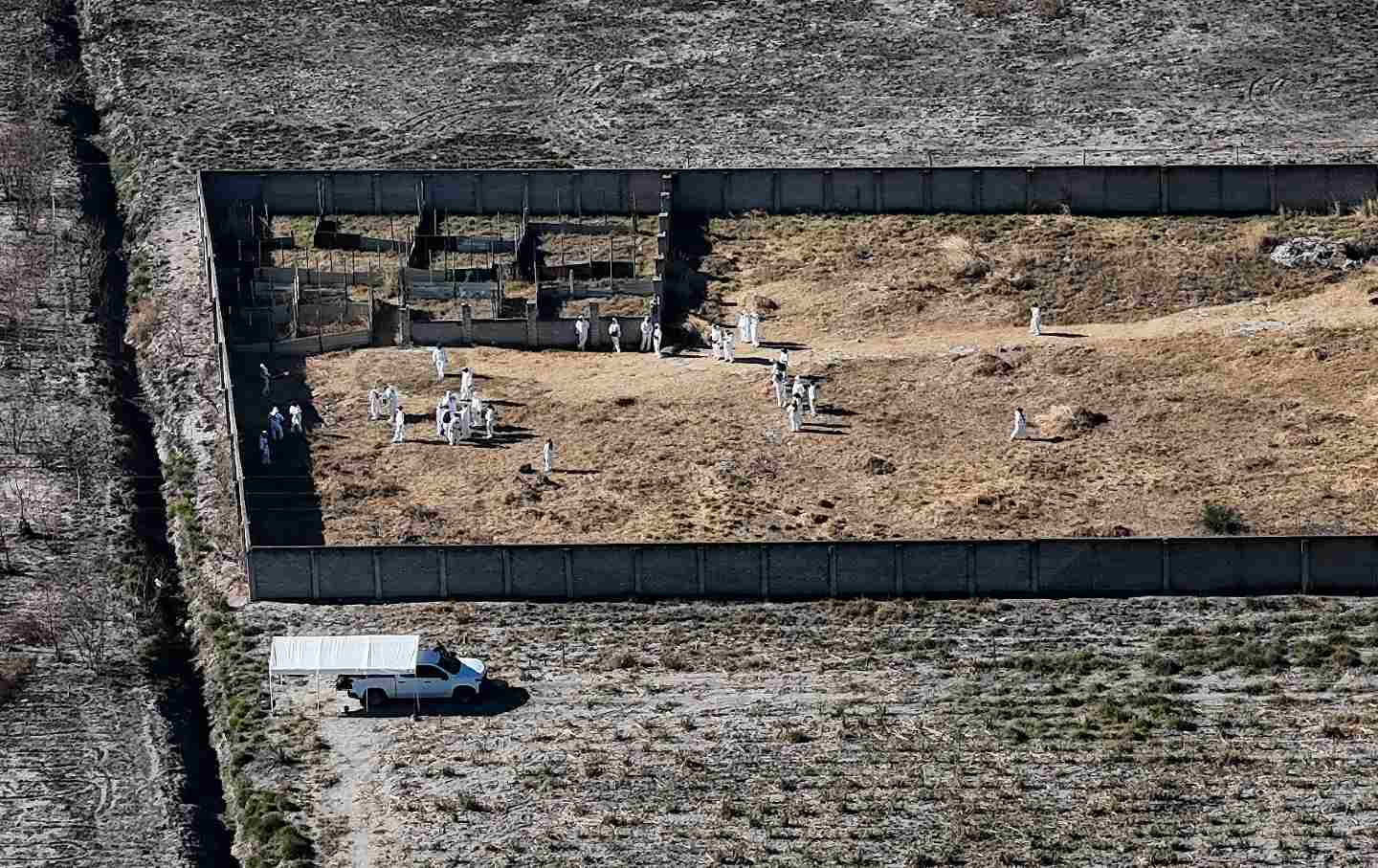Time for a Transnational Uprising Against a Reckless Escalation of the Arms Race?
The specter of omnicide looms.
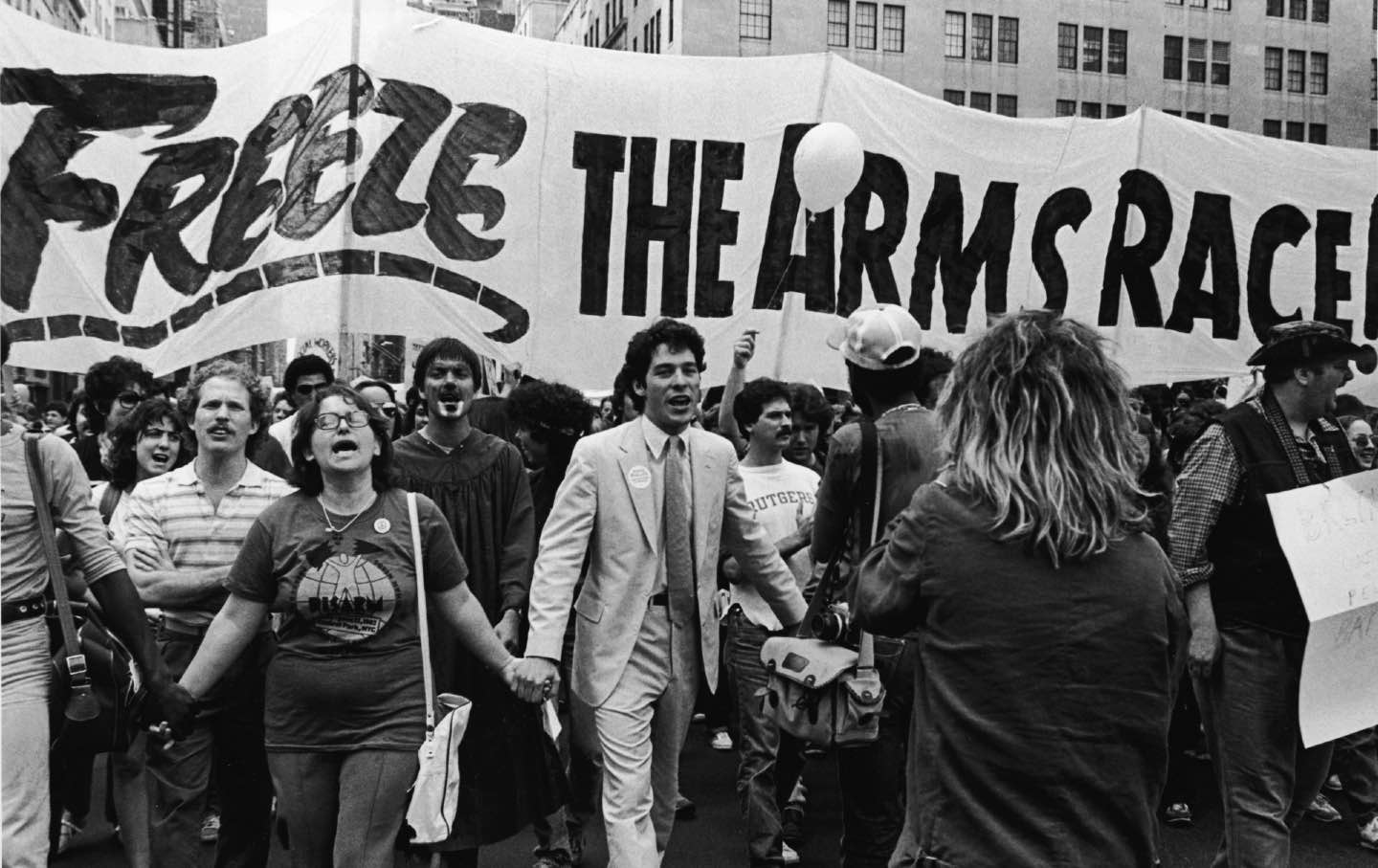
Demonstrators march toward Central Park during a nuclear disarmament rally of 750,000 in New York, N.Y., on June 12, 1982.
(Lee Frey / Getty)Forty years ago, across a dozen pages of The Nation, I was in a debate with the English historian E.P. Thompson about the US-Soviet nuclear arms race, the relative culpability of both governments, and how activists should approach it all. At the time, Cold War hostility was rampant. In a March 1983 speech to an audience of evangelicals, President Ronald Reagan declared that the Soviet Union was an “evil empire” and, for good measure, “the focus of evil in the modern world.” Weeks later, Soviet leader Yuri Andropov accused the United States of pursuing an arms buildup to win a nuclear war; in his words, “not just irresponsible, it is insane.” Both countries were gunning their military-industrial engines in a feverish drive for more advanced nuclear arsenals.
Such was the frightening distemper of the times. But a grassroots movement calling for a bilateral freeze on nuclear weapons had quickly gained wide support and political momentum since Reagan took office. In April 1982, he responded to the growing upsurge of alarm with a radio address that tried to reassure. “Today, I know there are a great many people who are pointing to the unimaginable horror of nuclear war. I welcome that concern,” Reagan said. He added that “a nuclear war cannot be won and must never be fought.”
Two months later, not mollified by soothing words, 1 million people gathered in New York’s Central Park at a demonstration for nuclear disarmament and peace. That protest was part of a transatlantic uprising against reckless escalation of the arms race. Activists struggled to challenge a spiraling arms contest propelled by two nations with very different political systems but mutual reliance on brandishing huge quantities of nuclear weaponry.
Deeply unsettling as that era was, the specter of omnicide now looms much larger. Inflamed tensions between Washington and Moscow while the Ukraine war rages—as well as between the US and China, over Taiwan and the East China and South China seas—are making a nuclear conflagration plausible via any one of numerous scenarios. Meanwhile, disagreements over how to view relations between the United States and Russia are roiling peace groups and much of the left here at home. Fears of being perceived, if not smeared, as pro-Putin or sympathetic to Russia are palpable, with ongoing constraints on advocacy.
We hear next to nothing about the crying need to reinstate the Open Skies and Intermediate-Range Nuclear Forces (INF) treaties canceled by President Trump or the Anti-Ballistic Missile treaty canceled by President George W. Bush, while the absence of those pacts today makes a nuclear war with Russia more likely. Neither Barack Obama nor Joe Biden tried to revive those agreements snuffed out by their Republican predecessors.
For his part, beginning with the Ukraine invasion, Putin has done much to boost atomic tensions. His threats to use nuclear weapons said the usually untrumpeted doctrine out loud. Both Russia (except for an eleven-year hiatus) and the United States have always been on record as asserting the option to be the first to use nuclear weapons in a conflict.
The war in Ukraine has thrown the world closer to a thermonuclear precipice than ever. And, while daily horrors are being inflicted on the Ukrainian people by Russia’s warfare, the prevailing attitude in the US is that Putin isn’t worthy of negotiations over much of anything.
But if efforts for détente and arms control should be backburnered when a superpower is making horrific war on a country after an illegal invasion, neither Soviet Premier Alexei Kosygin nor President Ronald Reagan got the memo. In 1967, while the US government was escalating the Vietnam War, Kosygin met with President Lyndon Johnson in direct talks that lasted for more than a dozen hours at the Glassboro Summit in New Jersey. Twenty years later, Reagan met with Soviet leader Mikhail Gorbachev at the White House, where they signed the INF treaty; at the time, Soviet troops were continuing their war in Afghanistan, which took an estimated 100,000 Afghan lives, while the CIA provided military aid worth billions of dollars to mujahadeen resistance fighters
Midway through 1983, at the end of the published exchanges between E. P. Thompson and me, The Nation told readers that “the debate ventilates important issues, tactical and philosophical, confronting the antiwar movements in this country and in Europe.” Echoes of those important issues are with us now, and the stakes could not be higher.
Renowned as a social historian, Thompson was also a prominent leader of the European disarmament movement during the 1980s. He warned against “sleepwalkers in the peace movement” of the West who, he contended, were toeing the Soviet line while blaming the arms race on the United States. “Neither moralism nor fellow-traveling sentimentalism,” he wrote, “can be of any service in guiding the peace movement in its difficult relations with the Communist states.” The rulers of those states “are the ideological look-alikes of their opposite numbers in the West, thinking in the same terms of ‘balance’ and security through ‘strength.’”
In my view, the history of the nuclear arms race remained significant, with the United States as always in the lead. The fact that the US was a country with far more freedom had not made its government more trustworthy in terms of nuclear weapons. As the Soviet dissident historians Roy and Zhores Medvedev had written a year earlier in The Nation, “despite the more open character of American society…the role of successive US administrations has been, and continues to be, more provocative and less predictable than the Soviet Union’s in the global interrelationship between East and West. Military-industrial complexes exist in all modern industrial societies, but they are under much less responsible control in the United States than in the USSR.”
At the close of our debate, I expressed doubt that the US movement for disarmament and peace was in danger of being insufficiently critical of the Soviet Union. “A far greater danger is that, eager for respectability and fearful of finding itself in the line of fire of our nation’s powerful Red-baiting artilleries, it may unwittingly reinforce chronic American-Soviet antipathies…. We cannot reduce our society’s Cold War fervor by adding to it.”
Popular
“swipe left below to view more authors”Swipe →In the summer of 1985, Gorbachev announced a unilateral moratorium on nuclear test explosions, and he invited the United States to follow suit. If reciprocated, the move would pave the way for both countries to end their underground detonations of nuclear warheads, closing an intentional loophole that had been left by the Limited Test Ban Treaty of 1963. But major US news media were on guard. In the first CBS Evening News report on Gorbachev’s initiative, correspondent Lesley Stahl used the word “propaganda” four times. Influential newspapers were no less dismissive. A New York Times editorial called the moratorium “a cynical propaganda blast.”
Although the US refused to reciprocate, Russia kept renewing its moratorium. In December 1985, when reporting news of an extension, CBS anchor Dan Rather began by saying, “Well, a little pre-Christmas propaganda in the air, a new arms-control offer from Soviet leader Mikhail Gorbachev.” The Kremlin’s unrequited moratorium went on for 19 months, while the Nevada Test Site shook with 25 nuclear explosions beneath the desert floor.
Later in the decade, the cumulative impacts of grassroots organizing and political pressure helped shift Reagan’s attitude enough to bring about some US-Russian rapprochement and genuine diplomacy. A stellar result was the Intermediate-Range Nuclear Forces treaty, signed by Reagan and Gorbachev in December 1987. It was a triumph for activists and a wide array of other outspoken advocates who over the previous years had grown accustomed to epithets like “Kremlin dupes” and “Russia apologists.”
Four decades later, such epithets are again common. American society’s Cold War fervor is somewhere near an all-time high. It doesn’t take much these days to be called pro-Putin; merely urging a cease-fire in Ukraine or substantive diplomacy can suffice.
“I think Putin is not only thrilled by the divide over whether we continue and at what levels to fund Ukraine. I think he is fomenting it as well,” Hillary Clinton said during a PBS NewsHour interview in October. She added: “When I see people parroting Russian talking points that first showed up on Russia Today [the network now calling itself RT] or first showed up in a speech from a Russian official, that’s a big point scored for Putin.”
Such smeary tactics aim to paralyze discourse and prevent on-the-merits discussions. The techniques are timeworn. Twenty years ago, opponents of the impending US invasion of Iraq were often accused of parroting Iraqi talking points and serving the interests of Saddam Hussein. Now, in the prevalent media and political environments, the kinds of “talking points” that Clinton meant to defame include just about any assertion challenging the idea that the US government should provide open-ended military aid to Ukraine while refusing to urge a cease-fire or engage in substantive diplomacy.
During Reagan’s first term, the Bulletin of the Atomic Scientists set its Doomsday Clock at between three and four minutes to apocalyptic midnight. It is now 90 seconds away, the closest ever.
Crucial lessons that President John Kennedy drew from the Cuban missile crisis, which he articulated eight months later in his June 1963 speech at American University, are now in the dumpster at the Biden White House: “Above all, while defending our own vital interests, nuclear powers must avert those confrontations which bring an adversary to a choice of either a humiliating retreat or a nuclear war. To adopt that kind of course in the nuclear age would be evidence only of the bankruptcy of our policy—or of a collective death-wish for the world.”
But no matter how dangerous Biden’s policies toward Ukraine and Russia are, most sizable arms-control and disarmament groups in the United States have bypassed dissent. Few have pushed for serious negotiations to find a peaceful resolution. Many have, in effect, gone along with treating “diplomacy” as a dirty word. Such stances are particularly striking coming from organizations with an avowed mission to reduce the risks of nuclear war—even though the longer the war in Ukraine persists and the more it escalates, the greater the chances that those risks will turn into global nuclear annihilation.
We can’t know E. P. Thompson’s outlook on the 21st-century events that led to the current nuclear peril—he died in 1993—but the core of his seminal 1980 essay “Protest and Survive” resonates now as a chilling wake-up shout to rouse us from habitual evasion. “I have come to the view that a general nuclear war is not only possible but probable, and that its probability is increasing,” he wrote. “We may indeed be approaching a point of no-return when the existing tendency or disposition towards this outcome becomes irreversible.” And yet, Thompson went on,
I am reluctant to accept that this determinism is absolute. But if my arguments are correct, then we cannot put off the matter any longer. We must throw whatever resources still exist in human culture across the path of this degenerative logic. We must protest if we are to survive. Protest is the only realistic form of civil defense.
The essay quickly became the opening chapter in an anthology also titled Protest and Survive. Daniel Ellsberg wrote in the book’s introduction that “we must take our stand where we live, and act to protect our home and our family: the earth and all living beings.”
What Martin Luther King Jr. called “the madness of militarism” finds its supreme expression in the routine of nuclear weapons policies, which rely on an extreme shortage of countervailing outcry and activism. The ultimate madness thrives on our daily accommodation to it.
Hold the powerful to account by supporting The Nation
The chaos and cruelty of the Trump administration reaches new lows each week.
Trump’s catastrophic “Liberation Day” has wreaked havoc on the world economy and set up yet another constitutional crisis at home. Plainclothes officers continue to abduct university students off the streets. So-called “enemy aliens” are flown abroad to a mega prison against the orders of the courts. And Signalgate promises to be the first of many incompetence scandals that expose the brutal violence at the core of the American empire.
At a time when elite universities, powerful law firms, and influential media outlets are capitulating to Trump’s intimidation, The Nation is more determined than ever before to hold the powerful to account.
In just the last month, we’ve published reporting on how Trump outsources his mass deportation agenda to other countries, exposed the administration’s appeal to obscure laws to carry out its repressive agenda, and amplified the voices of brave student activists targeted by universities.
We also continue to tell the stories of those who fight back against Trump and Musk, whether on the streets in growing protest movements, in town halls across the country, or in critical state elections—like Wisconsin’s recent state Supreme Court race—that provide a model for resisting Trumpism and prove that Musk can’t buy our democracy.
This is the journalism that matters in 2025. But we can’t do this without you. As a reader-supported publication, we rely on the support of generous donors. Please, help make our essential independent journalism possible with a donation today.
In solidarity,
The Editors
The Nation

